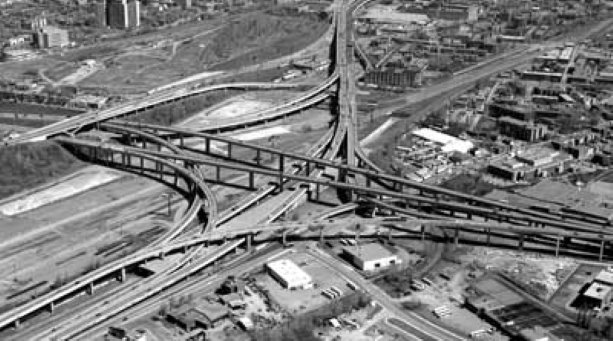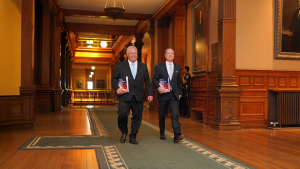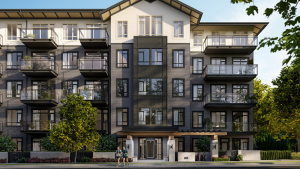The Quebec government is considering a public-private partnership for the reconstruction of this Montreal interchange.
Infrastructure
MONTREAL
The Quebec government is considering a public-private partnership for the estimated $1.5 billion reconstruction of Montreal’s Turcot Interchange, an elevated highway system crucial to the flow of traffic on the island.
“All options are on the table,” said Henri Gilbert, Transport Quebec’s Director for the Island of Montreal. “We have not decided on what option to take. If we go with a P3, we can give the requirement for maintenance for 40 years, as we did with Highway 25.
“But there is also the possibility of conventional management as we do with other construction projects.”
Should it be a P3, it opens up the possibility of another international consortium taking charge of the project, as is the case for the Highway 25 and Highway 30 projects.
Built in 1966-67, the original interchange system cost $24 million. The system connects with highways 20, 720, 15 and 10. On a daily basis, 280,000 vehicles pass through the system, which has 7.7 km of elevated roads and four individual interchanges.
Construction is scheduled to begin 2009 and be complete by 2015. For the first four years, the new roads will be built under the existing elevated highway and on the site of CN’s former Turcot Yard, just below the St. Jacques Escarpment.
In the final two years, two-thirds of the elevated interchange will be demolished, as will ramps and overpasses, and the new roads will be linked.
“It’s going to be the biggest road construction project in Montreal in the past 30 years,” said Transport Minister Julie Boulet.
The Highway 20 portion of the interchange will be moved 500 meters north to the Turcot Yard, as will the mainline rail track on it. The construction will also require the expropriation of some residential and commercial properties.
The majority of the elevated portions will be replaced with ground-level roads, which will be on six to eight feet high roadbeds, with slopes on the side to be made of recycled material from the demolition.
“We are going to be able to develop 100 hectares of land in the future by moving the road and tracks,” said Gilbert. “One of the biggest challenges will be to build a road underneath the existing highway and maintain the traffic flow. Currently we have 165,000-square-metres of structures. When it will be finished, it will be reduced to 55,000-square-metres.
“It’s a real challenge to build a new highway in the centre of Montreal,” he added.
The new interchange will have approximately 13 km of roads, including exits. But it will not be increased in size to allow for more traffic capacity.
“We could have repaired the existing interchange,” said Gilbert, “(but) it is 40 years old and now we have the opportunity (to rebuild). Because we bought the Turcot Yard, we do not have to respect the 25-metre elevation off of the Lachine Canal and build two-stories up in the air. Everything we do will ensure that the new interchange will be there for a long time.”
Before the demolition tenders can be issued, Transport Quebec has to determine whether it will take the P3 route. Tendering for engineers, architects, general contractors or a P3 consortium will follow the standard public bidding process.
The project will require nearly one billion cubic meters of various materials.
To ensure the quality of the work, Transport Quebec plans to have a laboratory verify that the materials conform to provincial standards.











Recent Comments
comments for this post are closed